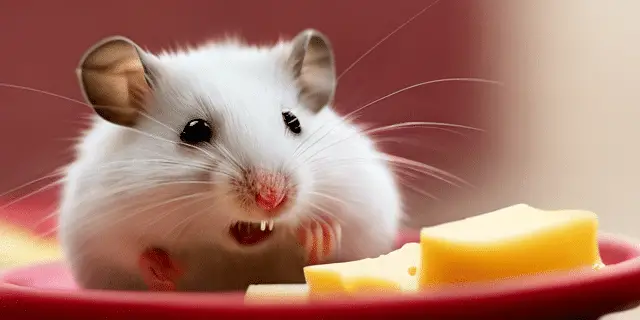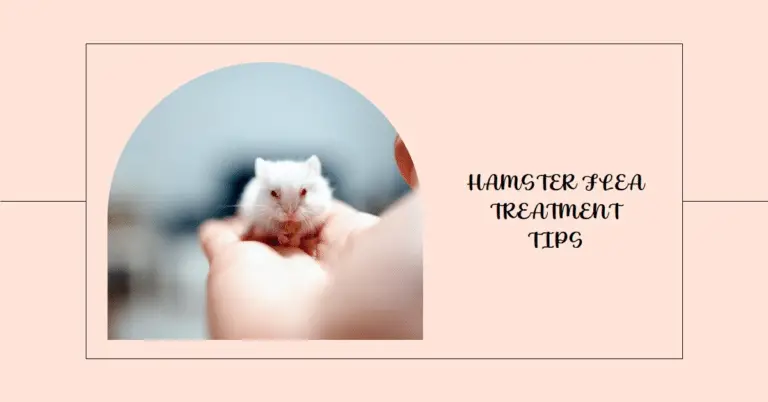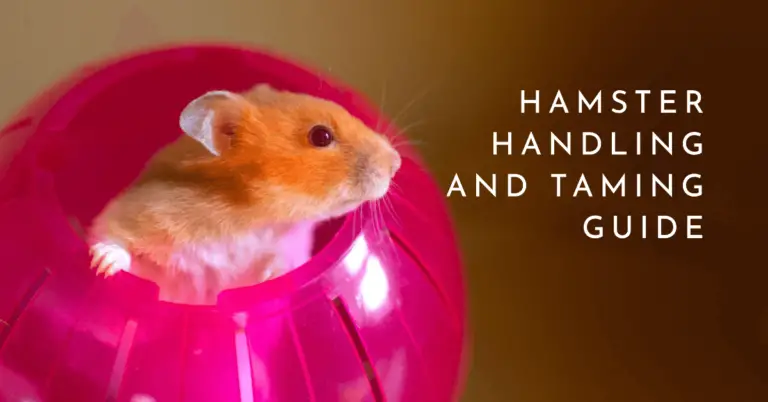Welcome to the first in my series of in-depth blog posts on hamster care! Properly housing your small furry friend is the critical foundation to their health and happiness. When setting up a hamster habitat, there are many important factors to consider so you provide everything they need to thrive, as outlined in my Hamster Care guide.
In this guide, I’ll walk you step-by-step through choosing and arranging the ideal hamster cage. You’ll learn cage size recommendations, layout tips, the best bedding and accessories to select, and regular maintenance like cleaning. My goal is to equip you with the key information you need so your hamster has a safe, comfortable, and enriching place to call home!
Determining the Right Cage Size
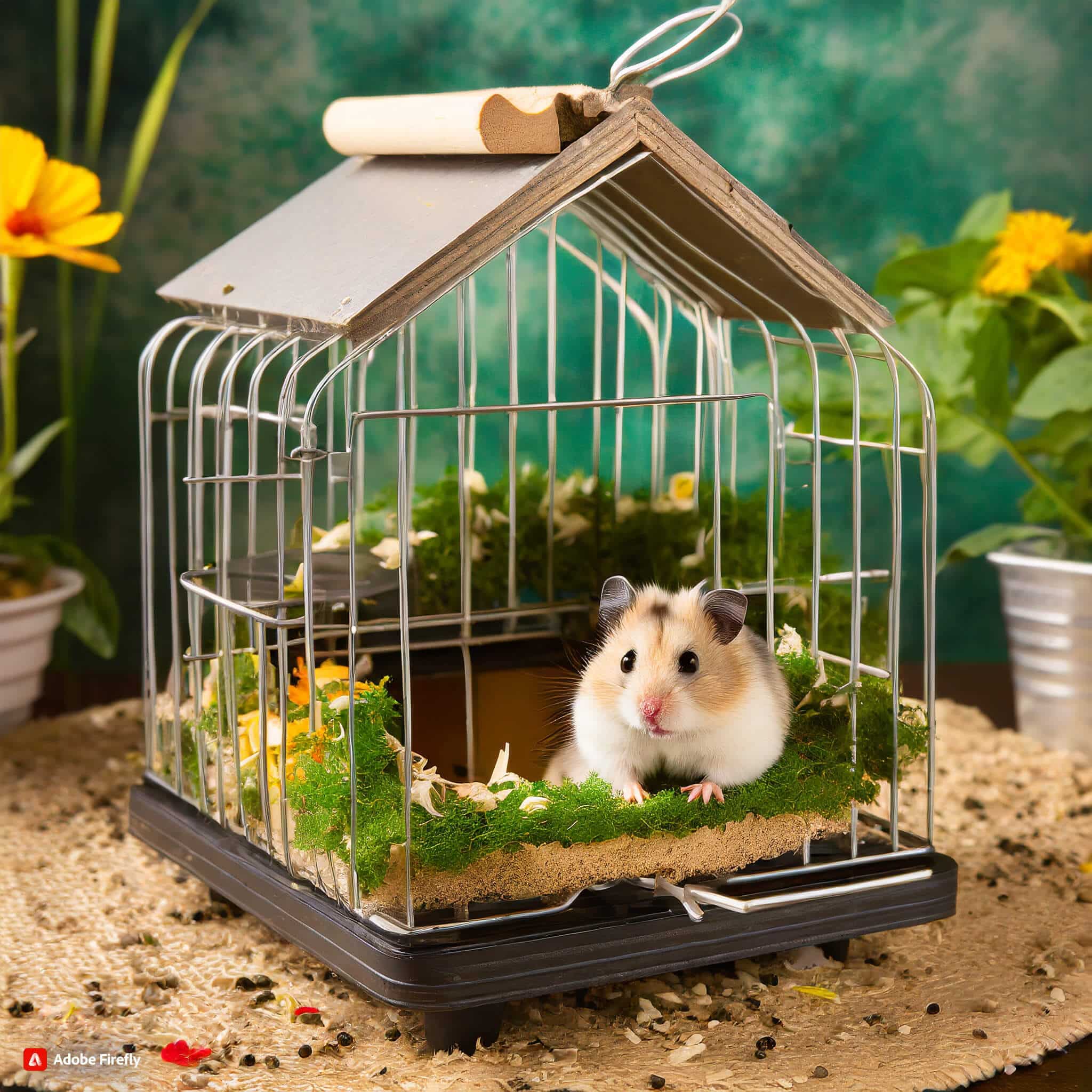
The very first decision when buying or building your hamster’s residence is – how much living space do they need? This depends on whether you adopt a dwarf hamster (Roborovski, Chinese, Russian Campbell’s) or a Syrian (Golden) hamster. Here are the general cage sizing guidelines:
For Dwarf Hamsters
The absolute minimum is 24 x 12 inches of continuous floor space, about the footprint of a 20 gallon aquarium. But the accepted standard for humane care of dwarf hamsters is actually much larger than conventional pet store cages provide – 36 x 18 inches or bigger. This gives them adequate room to scamper about.
Keep in mind dwarfs are highly energetic and active creatures! When given sufficient space, they will run laps around their cage nightly, stopping to munch food, sip water, or duck into hideouts. More floor area allows you to enrich their habitat further with exciting tunnels, ledges, and toys too.
For Syrian Hamsters
Goldens grow to be very large hamsters, so they need the most spacious accommodations. Never house a Syrian in anything smaller than 30 x 15 inches floorspace. Again, meeting only the bare minimum risks cramping these big, curious hamsters.
Ideally, aim for a 40+ inch long cage to give an adult Syrian hamster plenty of room to roam. Female Syrians in particular tend to be constantly on the move! Upgrade to the largest enclosure possible to improve their wellbeing.
📌 Pro Tip: Connecting two smaller cages can work well to create more interior real estate for your hamster to occupy and explore!
Clearly cage dimension guidelines must not be taken lightly. Overcrowding a hamster causes extreme stress and enables territorial aggressive behavior. Ensure you provide adequate unbroken floor space for exercising – vertical add-ons come second.
Speaking of multi-level cages…let’s break down how to design the layout.
Optimizing Cage Layout With Levels, Tunnels & Accessories
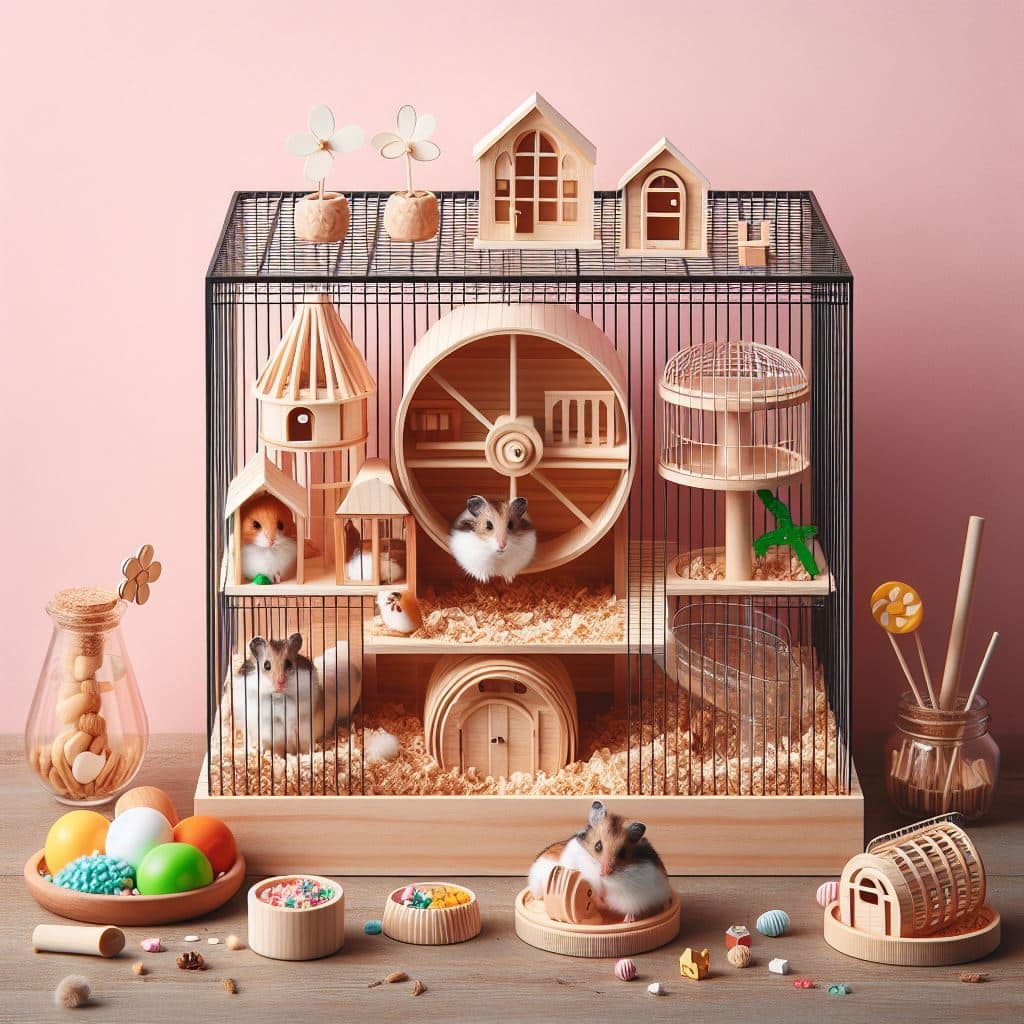
Outfitting your hamster’s residence with exciting spaces and activity zones promotes healthy physical and mental stimulation. When arranging accessories, keep these do’s and don’ts in mind:
Prioritize Ground Space
Focus first on maximizing open floor area before partitioning levels. Syrians especially require one continuous plane to roam before adding vertical components. Multi-level connectors like ramps and tubes infringe on essential ground coverage.
Hamsters primarily scurry across a flat plane, not up and down slopes! Levels stacked directly on top of each other minimize horizontal footage. Opt for a spacious single level cage, then augment with add-ons like modular connector tubes and free-standing platforms.
Choose Tip-Proof Accessories
Hamsters are incredibly agile, but also clumsy creatures by nature! When furnished properly, they delight climbing, clinging upside down, and cramming themselves into hideaways.
Safety-check ledges, hideouts, wood houses, and ramps to ensure stability. Avoid loose parts or awkward entrance angles that could cause an injury. Secure accessories firmly in place with industrial strength velcro and zip ties onto the cage wiring.
Allow for Uninterrupted Sleep
In the wild, hamsters nest underground during daylight hours to avoid disruption and danger. Recreate total darkness and privacy with enclosed hideouts and wood hutches offering both floor level and elevated sleeping nooks.
Hamsters feel most secure with snug sleeping quarters mimicking underground burrows. Place hideouts strategically around the habitat for unbroken resting periods.
📌 Pro Tip: Multi-chamber wood hutches function as bedroom, entertainment and bathroom to fulfill all life activities without emerging!
Encourage Foraging & Discovery
Now we get to the exciting part – enriching your hamster’s environment with tunnels, chew toys, exercise wheels and more to spark their curiosity!
Brainstorm cage layouts facilitating adventure. Winding plastic tunnels offer mystery, tubes permit aerial views, loo rolls and bendy bridges form spontaneous paths. Position playthings to maximize navigation between areas.
Incorporate interactive puzzles with treats tucked inside to motivate discovery too. Scatter feed dry food or hide live mealworms around the substrate to stimulate natural foraging behavior.
By thoughtfully designing their living space, you promote daily mental and physical activity crucial to your hamster’s enrichment.
Next let’s review the cage bedding basics.
Choosing the Best Substrate & Bedding
A soft, highly absorbent cage lining is vital maintaining hamsters’ sensitive respiratory systems and feet. Avoid dusty, aromatic, or needle/pine type wood shavings. Instead select:
Aspen Wood Shavings
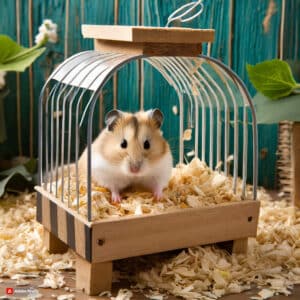
Aspen makes the best all-purpose bedding substrate. It absorbs moisture well, composts effectively for waste management and provides burrowing/nesting material too.
Avoid pine or cedar chips as these emit dangerous phenols. Opt for higher grade extra fine aspen shavings to minimize dust. Spot clean urine patches as needed between full changes weekly.
Recycled Paper Bedding
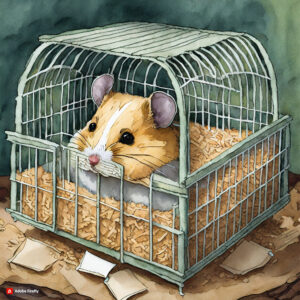
For nest making creatures like hamsters, recycled paper products like Carefresh form excellent burrows. These soft paper scraps wick away urine safely when deep enough.
They breakdown readily in the compost too. However, recycled paper bedding lacks the burrowing/chewing properties of wood chips. Use a deep 3-4 inch layer for absorbency.
Hay & Herbs
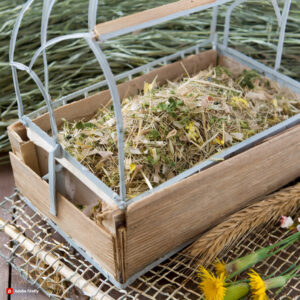
Dried grasses and herbs make healthy, low dust supplements allowing natural foraging. Timothy hay, oat hay or orchard grass provide digestion benefits too. Scatter these extras over wood shavings or paper bedding.
The right substrate keeps your hamster warm, dry and healthy while containing waste effectively. Alongside cleaning, it’s half the battle toward responsible habitat management!
Why Nesting Material Matters

In addition to cage substrate, hamsters need soft, fluffy fibers to satisfy nest construction instincts. Provide an abundant supply of:
Toilet Paper & Tissues
Among the best nesting materials, white paper products give hamsters thick, cottony texture to shred and shape elaborate nests. Toss in a fresh roll of TP periodically to prevent boredom.
📌 Pro Tip: Skip prints or dyes as hamsters may try ingesting these. Stick to plain paper.
Natural Cotton Fibers
100% cotton strips from old t-shirts or towels allow safe chewing and rearrangement into bedding. Natural fibers avoid risks of synthetic strings or fabrics. Cut into ~1 inch wide strips for tiny paws to work.
Monitor all nest additions closely and remove/replace soiled or damp sections promptly to discourage mites. Now let’s examine ideal hideouts.
Providing the Perfect Hideouts
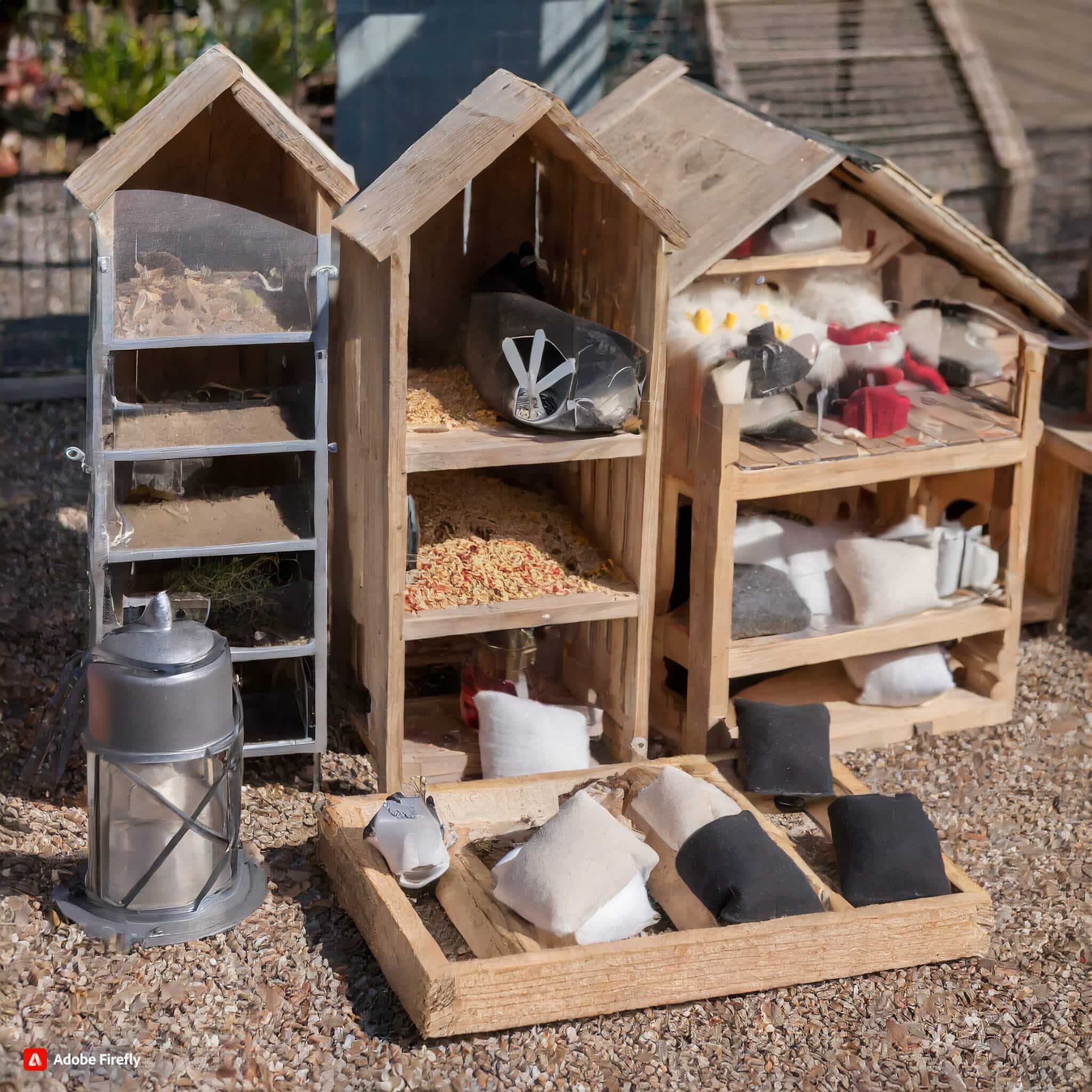
Hamsters adore squeezing themselves into impossibly small crevices to feel sheltered while sleeping. Fulfill this security-seeking instinct by providing:
Fully Enclosed & Covered Hideaways
Well-ventilated wood, ceramic and woven grass huts allow privacy. Look for entrance holes just large enough for a hamster to narrowly slip through. Darkness signals safety.
Elevate hideouts on a base above substrate or position horizontally at floor level. Offer one nesting site per hamster at minimum.
Comfy Sleeping Pouches
For secondary snoozing spots, include soft pouches or pocket hammocks from fleece or felt for burrowing into. Hang these pod beds securely from top level wires utilizing sturdy metal shower hooks and chains.
Hamsters stuff nesting materials inside pouches, shaping them into cozy cocoons. Check attachments weekly.
Multi- Chamber Wood Houses
These fully self-contained wood hutches serve as the ultimate all-in-one enclosure within the main living area! Multi-room connector pieces function as bedroom, play land and bathroom.
With food storage extensions, a hamster may not emerge for days. Be sure any modular furniture allows linking back to the central cage for necessary roaming.
By catering to hamsters’ security requirements, you support rhythmic circadian behaviors. Now let’s address maintaining a clean, healthy habitat.
Performing a Thorough Deep Cleaning

Even the most spacious, well-furnished cage requires weekly scrub downs avoiding ammonia and bacteria build up. Follow this routine:
Weekly Spot Checks
Daily replace soiled bedding patches. Clear built up poop piles and remove stale food debris. Check/refill water bottle levels. Scan for sharp edges needing repair.
Monthly Deep Cleaning Checklist
On a monthly basis, complete an entire habitat overhaul:
- Remove hamster into separate holding cage/playpen
- Dismantle cage layout & detach all accessories
- Dump all substrate out and sanitize interior with gentle detergent
- Wash hides, tunnels, ledges with soap and rinse well
- Dry each item fully and return fixtures to cage
- Add several inches of fresh bedding across the floor
- Arrange cleaned accessories back into original positions
- Return hamster once the habitat airs out for 30+ minutes
This refreshes their home environment entirely, preventing dangerous ammonia and encouraging natural behaviors like digging tunnels through clean substrate.
Final Hamster Housing Considerations
I know that was an avalanche of cage information to digest! Let’s recap the key habitat components:
- Reputable cage meeting minimum dimensions
- Multi-level layout allowing continuous floorspace
- Deep, soft, absorbent bedding materials
- Hideouts and睡眠袋offering darkness and cover
- Assortment of accessories providing exercise and enrichment
📌 Remember: Bigger is always better when it comes to sizing hamster cages! Upgrade enclosure dimensions whenever possible.
Properly outfitting your hamster’s residence might feel overwhelming early on. But by staying informed about ideal accessories and layouts while performing regular maintenance, you’ll provide them everything they need.
Creating a safe, clean habitat enriched with tunnels, chew toys, soft bedding and hideouts allows hamsters to indulge natural behaviors. This means you’ll have a happy, healthy fur baby scurrying about home sweet home!
For additional hamster care topics like nutrition, taming and health, explore my Hamster Care guide or website HamsterHarbor.com further. Let me know if you have any other questions in the comments!


